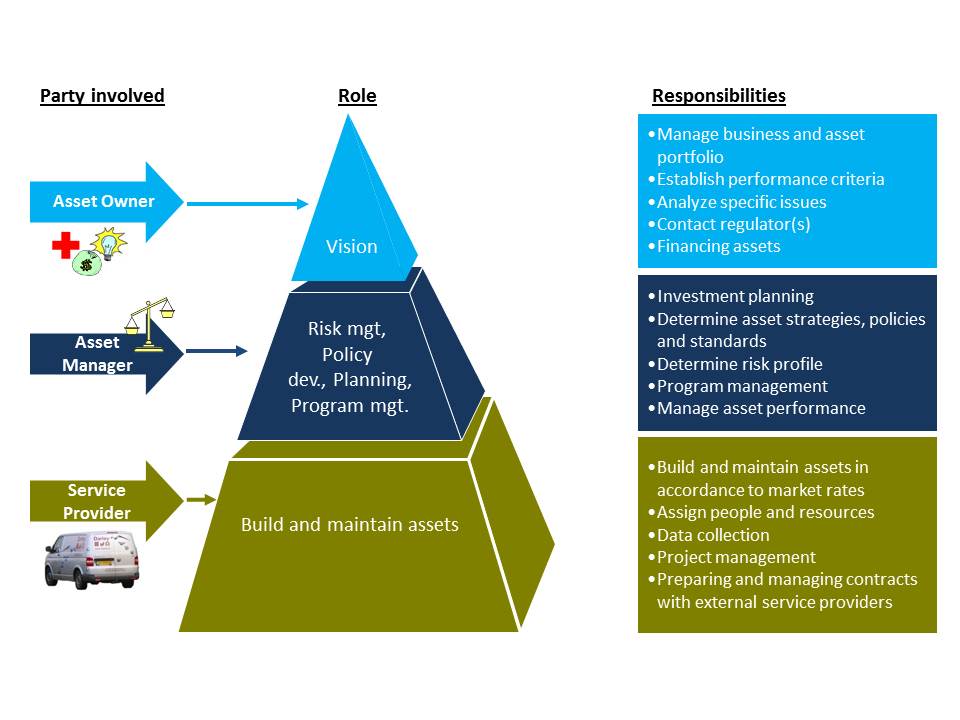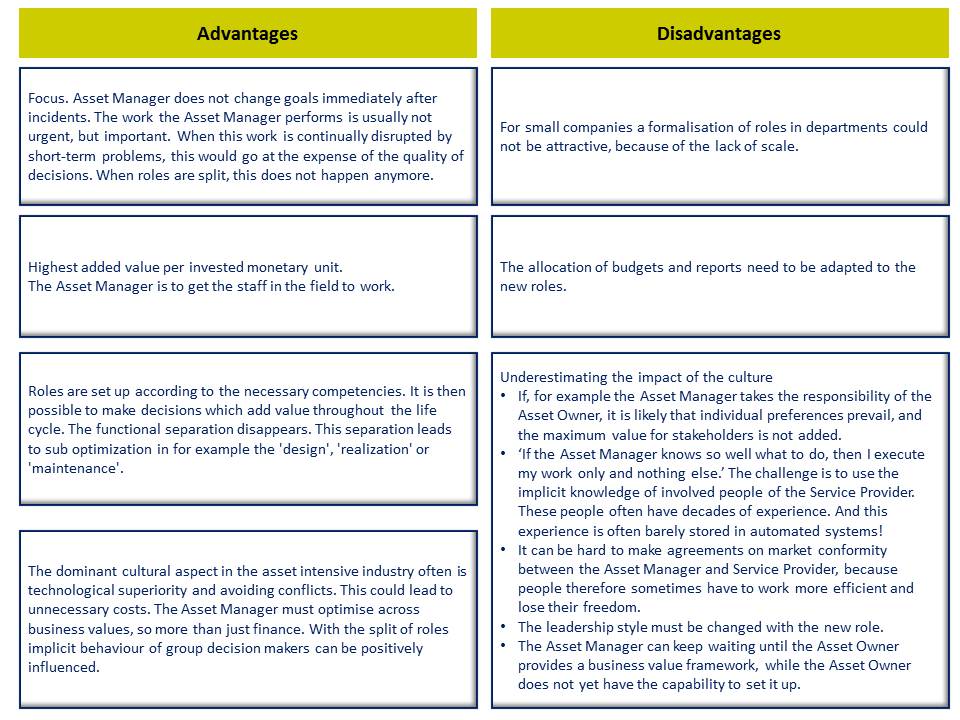Sense and nonsense of splitting Asset Management roles
2 December 2011 • John de Croon
asset management strategie, risk management, policy development, planning, program management, manage changes
Asset Owner, Asset Manager, Service Provider. These terms are often used in asset management. Sometimes correctly, sometimes not. This column briefly describes the concept, advantages and problems which go with the split of roles. And how you can successfully implement the roles.
The terms above can exist as roles (sometimes even as formal departments) in asset intensive businesses. Some companies are aware of the roles and have these roles formalised[1]. Other companies are aware of the roles, but do not see the advantages and disadvantages of splitting them yet. And there are companies that are still not aware of the roles[2].
Visible are overlapping responsibilities (it is likely that an activity is performed, but it is probably rather inefficient...) or lacking responsibilities (then nothing happens. This often occurs for example for performing risk assessments on business value level). Also we see that terms are mixed up and people miscommunicate. So first now the concepts will first be briefly discussed.
The Asset Owner is responsible for the ‘Governance system’. This means the asset owner must decide which stakeholders are important and what value the asset intensive company wants to add for the stakeholders. This is a long term vision. The asset manager should provide this as a concrete framework[3]with which decisions must be taken. The asset manager evaluates which risks could pose a threat and defines mitigation measures (plans) for unacceptable risks. The plans are carried out by a role called Service Provider. In the figure this is summarized.

‘But why should I have to split roles?’ is often heard. Advantages are focus and clarity in the desired goals. The Asset Manager connects to the long term vision of the Asset Owner, regardless of operational problems which the Service Provider deals with. The Asset Manager is then relieved of the responsibility to get the staff in the field to work and to keep the right competencies associated with the right role. But there are more advantages. Similarly there are disadvantages as well.

Writing down roles and responsibilities is the least difficult. If you involve the right people from the new roles and play a belote card game with a snack and a drink, you will already get a long way. The pain will be in the cultural aspects. A fair and open culture is needed in which the roles can grow together. The balance of power must be 'on top of the table’.
Maybe playing belote is not such a bad idea. It can be played with different people (roles). Eventually it always becomes clear who had which cards and how the cards were distributed. The powers are always on the table! So if you actually want to split your roles, start with belote. And do care for snacks and drinks. And paper .... If you lack a player, I will join.
[1] Think of energy utility companies, rail infra companies and water companies
[2] In the Netherlands public district boards often are “consciously incompetent” of “unconsciously incompetent”
[3] By means of a business values, KPIs and a risk matrix
John de Croon is partner at AssetResolutions BV, a company he co-founded with Ype Wijnia. In turn, they give their vision on an aspect of asset management in a weekly column. The columns are published on the website of AssetResolutions, http://www.assetresolutions.nl/en/column
<< back to overview
|


